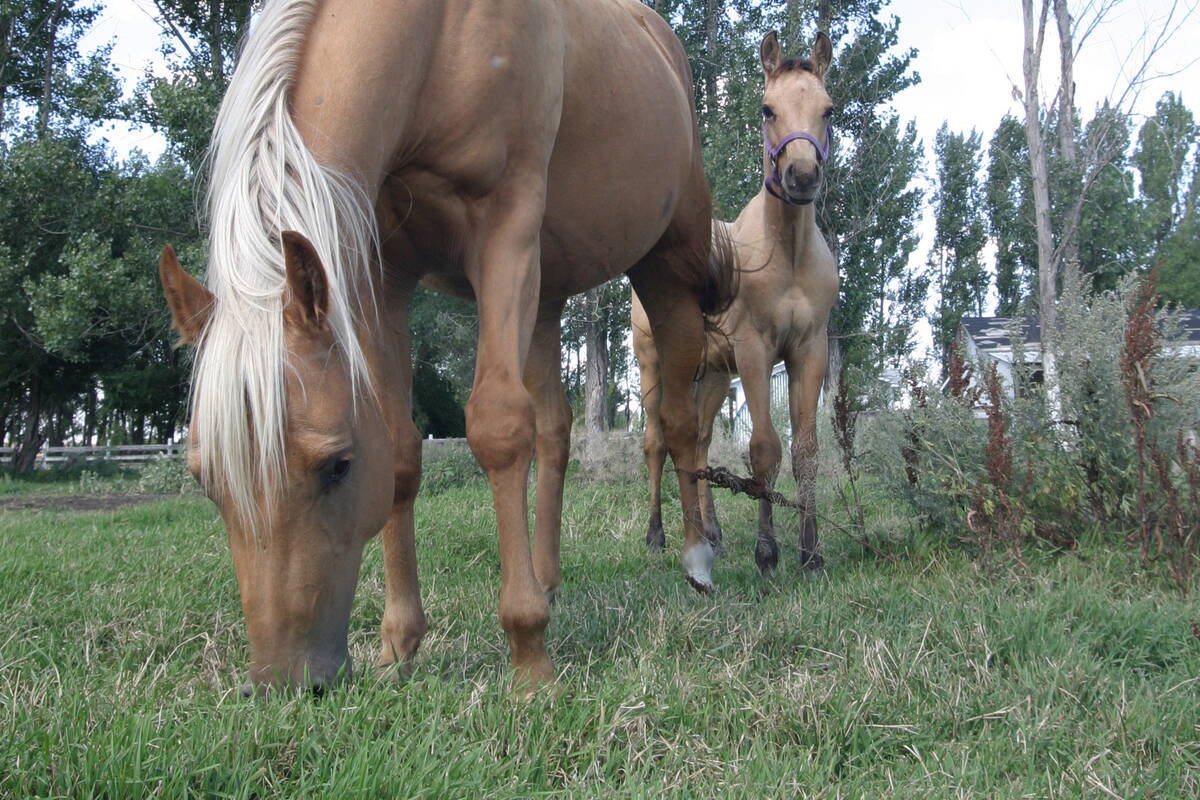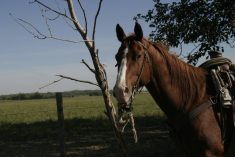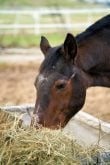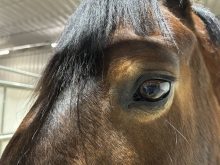Horses both need forage and horses need to forage.
Both aspects are equally nourishing to the horse and both aspects are necessary to fully satisfy their physical, emotional and mental contentment.
Forage comes without a feed label and receives very little marketing attention compared to the enterprising sales campaigns for designer equine rations. Many of these campaigns need to generate a doubt in the horse owner’s mindset regarding the ability of a forage diet to meet their horse’s needs in order to create a sale. This has led to a pervasive idea in the horse industry that the horse needs a scoop or scoops of ‘something extra’ in its diet to be complete.
Read Also

Ignoring growth plates sabotages young horse development
Young horse training plans and workloads must match their skeletal development. Failing to plan around growth plates can create lifelong physical problems.
As a result, a multibillion-dollar industry of bagged feedstuffs have come to replace a vital fraction of forage in the equine diet. This substitution, although well intentioned, may adversely affect the health, welfare, and behaviour of the horse and the pocketbook of the owner.
Well-chosen forage-only diets do a remarkable job of fulfilling the horse’s needs and owners who do their homework may be pleasantly surprised to find just why this is so.
Within the physical functionality and innate physiology of the horse are a series of checks and balances that rely on the trickle flow and ever presence of long-stem structural plant matter in its digestive system.
Dental health is highly reliant on the physical ingestion and grinding of fibrous plant material. The abrasive wear of grinding silica-rich plant matter is offset by the slow erupting nature of the horse’s teeth. It starts from the moment the horse nips the forages. The nipping action of the incisors and the grinding action of the molar arcade hold enamel growth of the incisor, premolar and molar teeth in check. Unchecked enamel overgrowths derived from ‘soft’ feeds are a primary reason necessitating dental work.
Ample ingestion of forage in a young horse stimulates the full expression of elliptical chewing movement. This movement pattern drives the dynamic forces critical to proper development of the dental arcade. This includes timely shedding of caps or baby teeth, eruption and alignment of permanent teeth, jaw development and tempo-mandibular health.
Not only does forage ingestion initiate proper chewing motion, it also triggers copious saliva production. Abundant saliva is necessary to move plant matter along the dental arcade and through the digestive tract. Without the benefit of the alkalinizing and buffering effects of the saliva upon the continuous flow of gastric acids from the lining of the horse’s stomach, the unchecked gastric acids cause caustic injury and ulceration to the lining of the stomach and spill over into the remaining intestinal tract and hindgut.
As the unchecked acids travel downstream in the intestinal tract they introduce consequences upon resident microbial communities that rely upon a specific range of pH in their environment to thrive. The horse derives tremendous nutritional benefit from its symbiotic relationship with the microbiome. Up to 70 per cent of its energy needs are provided by the microbiome’s fermentation of plant matter into short-chain fatty acids described as volatile fatty acids (VFAs). VFAs are the fuel of choice for the horse’s tissues.
Although other fuels can be derived from sources such as cereal grains and/or high-fat diets, they are not the preferred fuel for the horse’s flesh and this bears physiological consequence over time upon its health. Multiple residual benefits are bestowed upon the horse through this symbiotic relationship. The high amounts of B vitamins derived through good-quality forage diets are well known for their calming influence upon the horse.
The microbial community within the gut system has a very specific appetite for fibrous plant material. A more stable, resilient and diverse microbial population is found when a forage-only diet is fed. Without its ideal food source, the health of this community will struggle, eventually bringing the health of the whole horse into jeopardy. Natural and unfettered plant matter is the ideal source of pre- and probiotics for the horse. Once the forage aspect of the horse’s diet is properly regulated, the microbiome self-regulates.
Horses at an increased risk for laminitis, equine metabolic syndrome, pituitary pars intermedia dysfunction (PPID or Cushings), various muscular disorders, as well as equine gastric and hindgut ulceration, colic and diarrhea realize tremendous benefit from well-managed forage-only diets.
The physical nature of forage provides fill for the horse’s extensive digestive tract where the forage acts as a space holder keeping the abdominal structures positioned properly. The digestive tract is a muscular tube which is conditioned by the steady flow of forage. Whenever gaps occur in the intestinal fill or digestive tract movement is poor, the horse becomes increasingly subject to colic and catastrophic intestinal twists and displacements.
Physical movement is an integral part of life for the horse. Movement is meant to sustain life — not check off an exercise or performance list. The internal and external movements engaged through the act of foraging provides the horse’s body with multiple avenues of ‘behind-the-scenes’ support and sustenance.
The past 20 years of research have contributed a large body of work to a better and deeper understanding of the horse’s need for forage and the physiological and behavioural consequences if these are not met. Horses need sufficient foraging opportunities in engaging social environments to self-regulate their emotional weather and calm their mentation.
The horse was designed to consume plant material and plenty of it, at a near-constant and steady pace.
Many a health concern or behavioural oddity in the horse can be linked to the failure to properly satisfy the forage needs of the horse.
Whether forage is derived in a grazing setting or from hay, its impact upon the health and welfare of the horse is formidable.
















